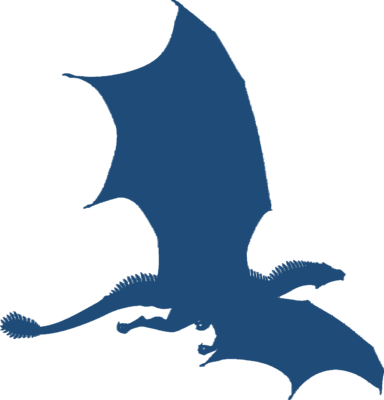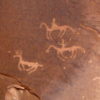To begin with, written language or what would lead to written language, took not one form but two. The obvious pictographic imagery and what would be the earliest ideographs.
Imagine for a moment you have one of the earliest cave painters. As much as they were able to depict things they saw in the world around them, even things they saw in dreams, some concepts would have no obvious correspondence in nature but they emerged anyway. Rhythmic marks left by a beak chipping against a wall, say. They would stop and note the pattern or sequence, even note that they could make the same number of marks as deer they saw, or moons they saw pass.
Like musical notation. In fact, they now think that our sense of music may have emerged even before our grasp of spoken language.
But for a long while, besides ideographic marks and pictographic imagery, little else served much purpose. Still most of the tribes lore would have been preserved through spoken word, poetry and the like, the written element mostly just supplementing stories, songs and chants. With the rise of practices like agriculture though, people began trying to record concepts that they really only intuited. There was no way to record it in concrete imagery.
So, writing was considered inferior? In a sense inferior, but not really. It was more mysterious, removed and otherworldly. There was the intuition that the images held more than just what their creators intended, and people weren’t entirely certain that they understood what that intention might be.
So in time, they began to note weather cycles, and plant growth patterns, things that needed no special attention before. You just went out hunting or fishing if and when you had to, and avoided the weather if it became unsafe. So how would you depict in pictures instructions for how to plant corn and when?
Somehow depict phase of sun. Some astrological symbolism, perhaps? That was indeed used. What they began doing was using simpler and smaller depictions of their original pictographs, and combining them in ways that would illustrate concepts.
Short hand. Yes. This short hand would in time be used to create new words from the sounds of old words, more by intuition and inspiration than anything else to start. The pictograph for fish just corresponded to the word fish, but the shorthand symbol eventually began to be used to indicate anything that sounded like the word for fish.
This became more and more the trend as cultures had more and more contact with each other. Trade and conquest made it necessary to be able to make records and notes of concepts that were newly introduced.
Abacus. Yes. In time, the direct correspondence between a character and a concept was lost, each character retaining only its phonetic correspondence, and through this system they could hear any word and record it in their own script.
I think there must have been some utilitarian value to that. Indeed, there was. They had to understand concepts introduced from other cultures, other regions of the world entirely, like the idea of zero say, but the structure of the language had to be preserved so translation was never perfect.
Your thoughts are welcome. Be well friends.
Travis Saunders
Dragon Intuitive
~science,mysticism,spirituality~



Leave a Reply